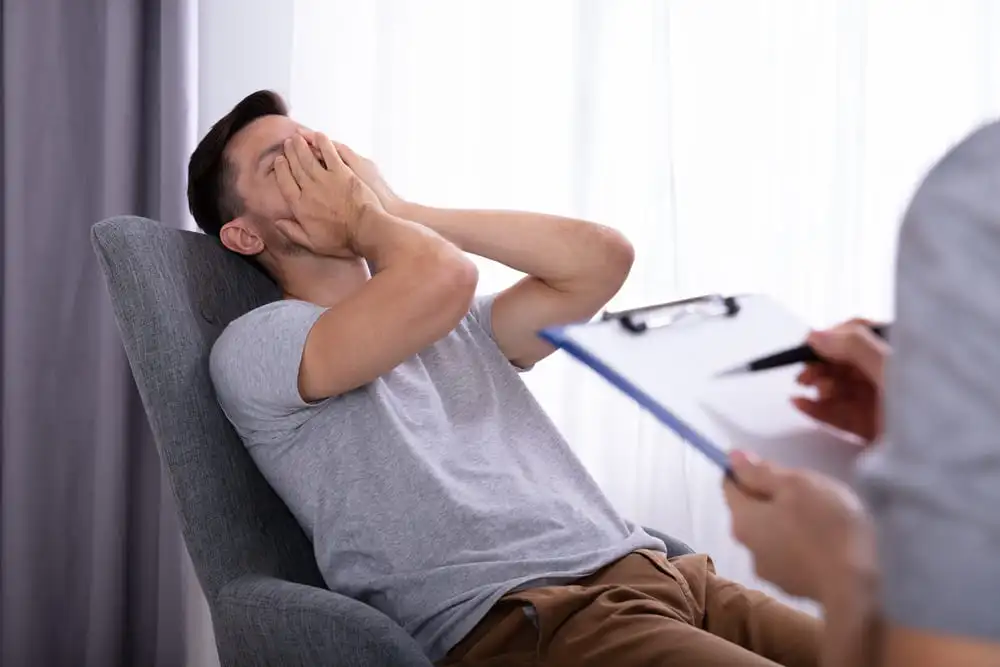This article will review somnolence disorder treatment options, particularly for idiopathic somnolence, a disorder characterized by excessive daytime sleepiness that has unknown causes.
Introduction
Millions of Americans struggle with sleep disorders, but not everyone has issues falling asleep. Some people have issues with excessive sleeping. People who struggle with idiopathic hypersomnolence get adequate hours of sleep on paper, but they still struggle when it comes to getting up and feeling energized throughout the day. This article will focus on idiopathic hypersomnolence, its diagnosis, and treatment for hypersomnolence disorder.

Understanding Idiopathic Hypersomnolence
Idiopathic hypersomnolence can have a severe impact on people’s daily lives, which is why it’s imperative to find effective treatment strategies to alleviate symptoms and improve the quality of life for those who are affected.
-What Is Idiopathic Hypersomnolence?
Hypersomnia is a compound word referring to people who get excessive sleep. Individuals who struggle with hypersomnolence disorder get at least 6 hours of sleep each night, but regardless of how much they get, they have issues getting up in the morning, and they feel tired throughout the day.
Hypersomnia is its own category of sleep conditions. The difference between hypersomnolence and idiopathic hypersomnolence is that there is no clear cause for idiopathic hypersomnia. Without a clear cause for the symptoms, finding the right hypersomnolence treatment and managing symptoms can be more challenging.
-Diagnosis of Idiopathic Hypersomnolence
Symptoms of idiopathic hypersomnia include sleeping too much at night, having difficulty waking up in the morning, taking very long naps throughout the day to compensate for feeling tired but not feeling refreshed, and cognitive dysfunction throughout the day because of low energy and issues with sleep quality.
In order to receive a diagnosis, a professional will ask a series of questions related to sleep habits and symptoms to determine if you experience the following:
- Daytime sleepiness
- Sleeping more than 10 hours every day
- Problems waking to alarm clocks
- Feeling groggy most of the day
- Experiencing extreme sleep inertia
Pharmacological Treatments
For difficult situations, pharmacological treatments are a valuable resource for idiopathic hypersomnolence because they can make it so that you can safely operate machinery, drive a car, and complete other personal and professional responsibilities without feeling exhausted or having cognitive dysfunction while doing so. However, they do have side effects that you need to be aware of.
-Medications for Idiopathic Hypersomnolence
There are several medications prescribed for idiopathic hypersomnolence treatment, most of which work through chemicals within the brain pathways to encourage wakefulness in the morning and throughout the day, combating the symptoms experienced in daily life.
The first category includes stimulants, which are often derivations of amphetamines like Ritalin or Dexedrine. Modafinil is one of the most common prescription drugs for idiopathic hypersomnia.
The second category is wake-promoting medications that are not categorized as stimulants. Modafinil is one of the most common prescription drugs for idiopathic hypersomnia and is a non-stimulant medication.
As of 2021, Low-Sodium Oxybate was approved as well, under the name Xyrem, which has been shown to reduce daytime sleepiness and improve daily function. This is the third category of medications.
-Potential Side Effects and Considerations
Dexedrine has been shown to cause side effects such as:
- Dry Mouth
- Weight loss
- Abnormal heartbeat
- Headache
- Decreased appetite
- Stomach pain
- Dizziness
- Nausea
- Tremors
Xyrem has been shown to cause side effects such as:
- Diarrhea
- Nausea
- Sleepiness
- Dizziness
- Bedwetting
- Tremors
Modafinil has been associated with the following side effects:
- Chest pain
- Fast heartbeat
- Diarrhea
- Anxiety
- Insomnia
- Breathing issues
- Headache
- Nausea
- Depression
Each of these medications works slightly differently, but they are designed not to improve your sleep and how rested you feel when you wake up but rather to combat the sleepiness you experience throughout the day so that you can improve daily function.
As many of them interact with chemicals in your brain and, in some cases, stimulate your brain and body, it is not uncommon to experience faster heartbeats, headaches, breathing issues, anxiety, and dizziness from that stimulation.

Non-Pharmacological Interventions
Non-pharmacological interventions may be effective as a standalone treatment for idiopathic hypersomnolence, or they might be something you incorporate in addition to pharmacological interventions. These can include behavioral therapy to adjust how you view your symptoms and how you let them affect you emotionally, as well as lifestyle modifications and sleep hygiene practices, none of which have negative side effects like medications.
-Behavioral Therapy and Lifestyle Modifications
If you are uninterested in the side effects of stimulant or non-stimulant wakefulness medications, hypersomnolence disorder treatment can also be managed with behavioral therapy and lifestyle modifications.
Cognitive behavioral therapy is one of the most effective forms of treatment for hypersomnolence disorder. It teaches you to reduce your negative reactions and, in effect, change your relationship to your symptoms so that you can better cope with your disorder.
In many cases, lifestyle modifications work more effectively when combined with things like behavioral therapy and sleep hygiene practices.
For example, over 82% of people with idiopathic hypersomnolence rely on caffeine during the day to combat their sleepiness, even though it is often rated as poorly effective in treating sleepiness.
One of the main lifestyle modifications for hypersomnolence disorder treatment is to avoid caffeine, which is easier done when you are also boosting your sleep hygiene practices, integrating exercise routines, and utilizing behavioral therapy to address other triggers and contributing factors to your symptoms.
Some examples of lifestyle modifications include:
- Changing what you eat so that you don’t have foods high in sugars or simple carbohydrates that can interfere with wakefulness
- Adjusting your lifestyle to avoid alcohol and caffeine, both of which can interfere with sleep and wakefulness throughout the day
- Starting or modifying an existing exercise routine
- Avoiding night shift work
-Sleep Hygiene Practices
Sleep hygiene practices are essential whether or not you are taking medication or behavioral therapy as part of your treatment for hypersomnolence disorder.
Sleep hygiene practices can include the following:
- Going to bed and waking up at the same time, no matter how tired you feel
- Lightly stretching or doing relaxing yoga before bed
- Meditating before bed to calm your thoughts
- Keeping your sleeping space cold and dark
- Removing lights or screens from your bedroom
- Journaling before bed to help calm your mind
Summing up
Idiopathic hypersomnolence treatment can help you manage the symptoms of your condition even if you don’t know the cause. It’s important to get an early diagnosis and find the right hypersomnolence disorder treatment to prevent severe cognitive dysfunction and other issues related to sleep quality. If you are experiencing symptoms of excessive daytime sleepiness, seek an evaluation from a mental health professional and explore hypersomnolence treatment options that can improve your quality of life.



